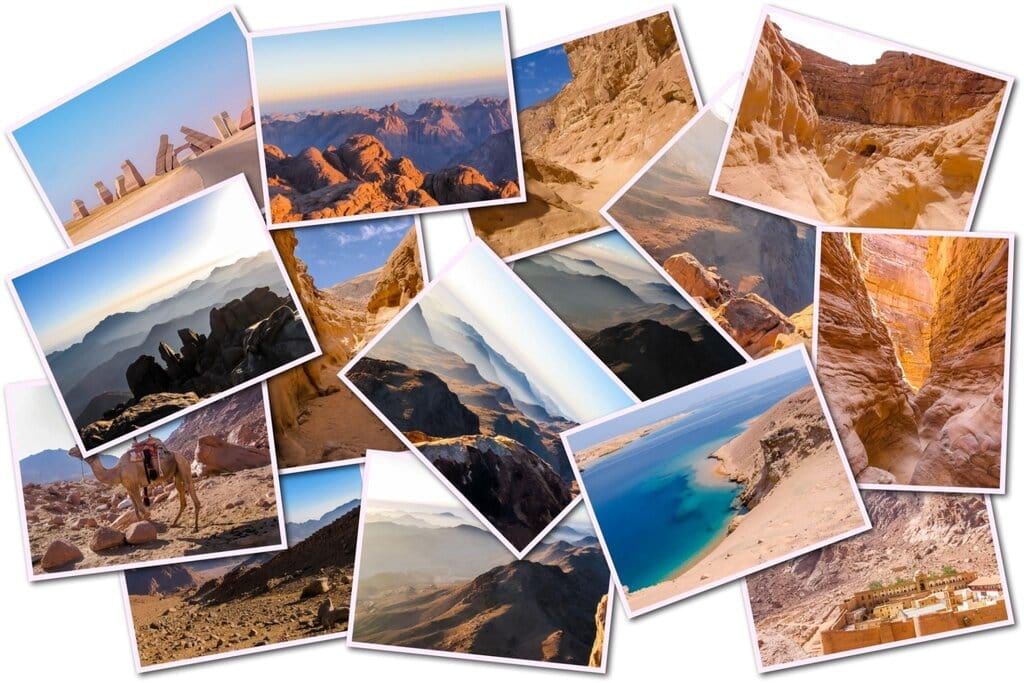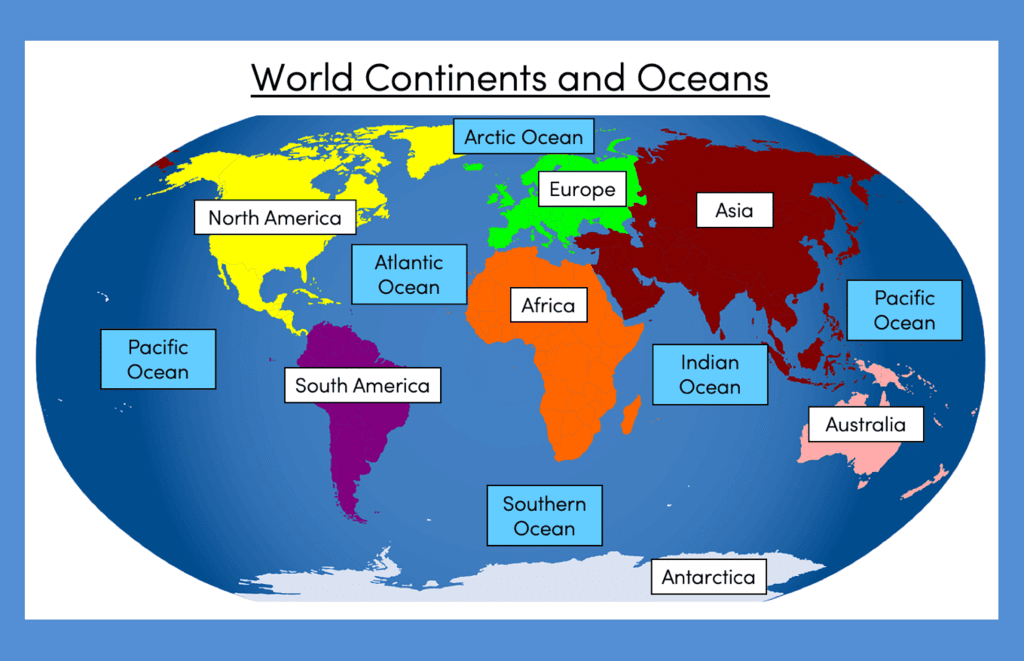Grade 3 Exam > Grade 3 Notes > Social Studies for Grade 3 > Chapter Notes: Physical geography
Physical geography Chapter Notes | Social Studies for Grade 3 PDF Download
Introduction
Physical geography is about exploring how the Earth looks and what makes it special. This chapter teaches us about Earth's land features, like mountains and rivers, and the big oceans and continents that cover our planet. We will learn to recognize and name these features to understand our world better!Identify Earth's Land Features Using Photographs
 Photographs show what Earth’s land features look like in real life.
Photographs show what Earth’s land features look like in real life.
- Mountains appear as tall, rocky areas, sometimes with snow on top.
- Hills look shorter and smoother than mountains, often covered in grass.
- Plains are shown as flat, open spaces, sometimes with farms or fields.
- Valleys are low areas between hills or mountains, often with a river.
- Rivers are long, winding paths of water flowing through the land.
- Lakes are calm, large pools of water surrounded by land.
- Deserts have lots of sand or rocks with few plants or trees.
- Forests are filled with many trees and plants, often home to animals.
Photographs help us understand and recognize these land features.
Ocens and Continents
Identify Oceans and Continents
 Earth is made up of large areas of water called oceans and large areas of land called continents.
Earth is made up of large areas of water called oceans and large areas of land called continents.
- Oceans are huge bodies of salty water that cover most of the Earth’s surface.
- Continents are big pieces of land where people, animals, and plants live.
- Maps and globes show where oceans and continents are located.
- Oceans are usually colored blue on maps, while continents have different colors.
- Each ocean and continent has a unique name to tell them apart.
- Learning their names and locations helps us understand Earth’s layout.
- Some continents are close together, while others are far apart, separated by oceans.
- Maps and globes show how oceans and continents fit together like a puzzle.
Knowing oceans and continents helps us learn about the world.
Name Oceans and Continents
Earth has five oceans and seven continents, each with its own name.
- The five oceans are:
- Pacific Ocean: The largest and deepest ocean in the world.
- Atlantic Ocean: The second largest, between North America, South America, Europe, and Africa.
- Indian Ocean: A warm ocean near India and Australia.
- Southern Ocean: A cold ocean surrounding the South Pole.
- Arctic Ocean: A small, icy ocean near the North Pole.
- The seven continents are:
- North America: Includes countries like the United States and Canada.
- South America: Located below North America, with countries like Brazil.
- Africa: A large continent with deserts, jungles, and animals like elephants.
- Asia: The biggest continent, with countries like China and India.
- Australia: A continent and country with unique animals like kangaroos.
- Europe: Includes countries like France and Germany.
- Antarctica: A cold continent covered in ice, home to penguins.
The document Physical geography Chapter Notes | Social Studies for Grade 3 is a part of the Grade 3 Course Social Studies for Grade 3.
All you need of Grade 3 at this link: Grade 3
FAQs on Physical geography Chapter Notes - Social Studies for Grade 3
| 1. What are some major land features on Earth that we can identify? |  |
Ans. Some major land features on Earth include mountains, valleys, plains, plateaus, hills, deserts, and bodies of water such as rivers and lakes. These features can be identified by their distinct shapes and locations on maps and photographs.
| 2. How can I recognize different oceans and continents on a map? |  |
Ans. You can recognize different oceans and continents on a map by their shapes and positions. Continents are large land masses, while oceans are vast bodies of water. Typically, oceans are labeled in blue, and continents are shown in various colors. Familiarizing yourself with the shapes of each continent can help in identifying them easily.
| 3. What are the names of the five oceans on Earth? |  |
Ans. The five oceans on Earth are the Pacific Ocean, Atlantic Ocean, Indian Ocean, Southern Ocean, and Arctic Ocean. Each ocean has unique characteristics, such as size, temperature, and biodiversity.
| 4. Why is it important to learn about Earth's land features and bodies of water? |  |
Ans. Learning about Earth's land features and bodies of water is important because it helps us understand our planet's geography, climate, and ecosystems. It also aids in navigation, environmental science, and understanding human impact on the Earth.
| 5. How can photographs help in identifying Earth's land features and oceans? |  |
Ans. Photographs can provide visual representations of Earth's land features and oceans, making it easier to recognize and learn about them. By examining images, students can see different landscapes, such as mountains or coastlines, and compare them to maps for better understanding.
Related Searches















